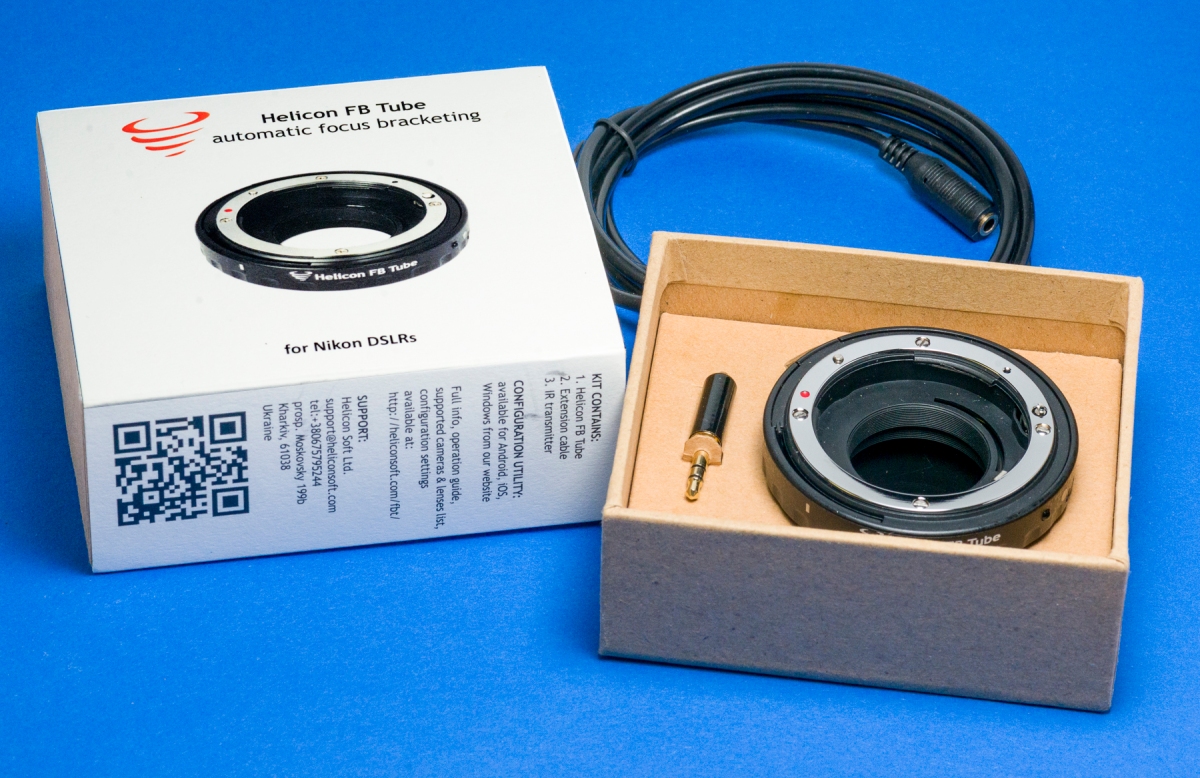
Many times when producing images of small subjects we find that there is insufficient Depth of Field (or depth of Focus) to render the entire subject sharply from front to back. Insufficient Depth of Field (DoF) is cause by three factors:
First, we understand that, in addition to exposure, aperture controls DoF. As we increase the F number we add DoF. However we may not be able to make a good exposure with a big F number like F22.
Another factor is that as we increase the focal length of our lens, the DoF becomes smaller. We could select a shorter lens, but that changes perspective and ability to focus close in the case of a macro lens.
The final consideration is that when the lens is moved closer, the DoF also becomes smaller. Thus we are our best enemy and must deal with self-imposed photographic criteria.
Therefore we have learned to use focus stacking to solve this problem. This requires a series of often many images, each made at a different point of focus from front-to-back. The images are blended into on in the computer using specialized software. The image of the bee (below) is an example of a stacked composite of 50 blended images.

The several images are captured using different points of focus. Some lenses change magnification as the focus is changes, creating alignment problems. The better approach requires moving the camera a measured increment between shots. A geared focusing rail (below) or an automated programmed focusing rail are specialized tools for changing the focal point without compromising image size.

Another system uses a rail incorporated into a bellows system to change focus but not scale, as pictured below. There are several choices from several manufacturers to accomplish this movement process.
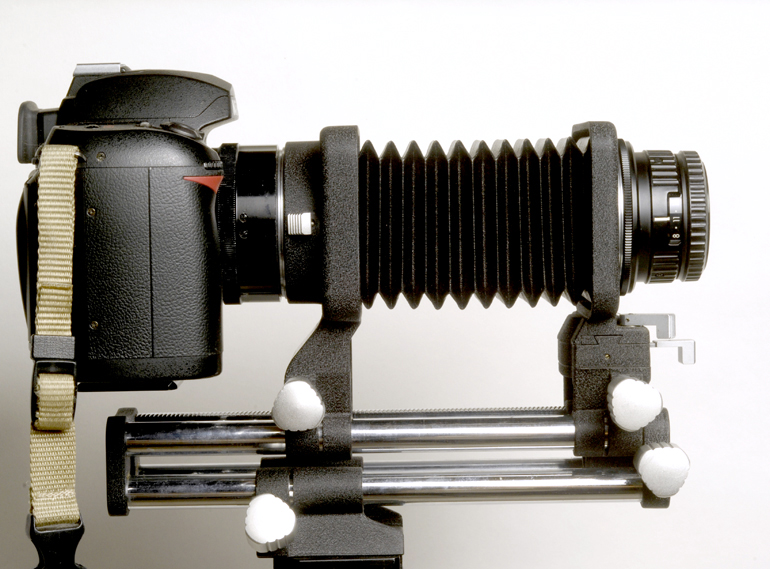
Now comes the new tool on the market- The Helicon FB Tube. This new idea comes from the producers of Helicon Focus, the industry leader in image stacking software. Essentially it is an extension tube with integrated electronic micro-controller designed to enable automated focus bracketing in single or continuous shooting modes. The measured tube length is 13mm and adds somewhat to the magnification of the lens dependent upon the focal length. Mounted on the camera in the same way as a usual macro extension tube, Helicon FB Tube automatically shifts the focus by one step with each shot thus producing a stack of images of unlimited length that can be rendered into a fully-focused image.
Helicon FB Tube needs no additional hardware apart from conventional cameras and lenses. Helicon FB Tube has no optics and does not affect image quality. Helicon FB Tube settings are configured through an additional application for Android or iOS. The set contains: Helicon FB Tube with IR Receiver and LED Indicator; Front and Rear Caps; IR Transmitter – connects audio port of a smartphone and Extension cable for smartphone and IR Transmitter.
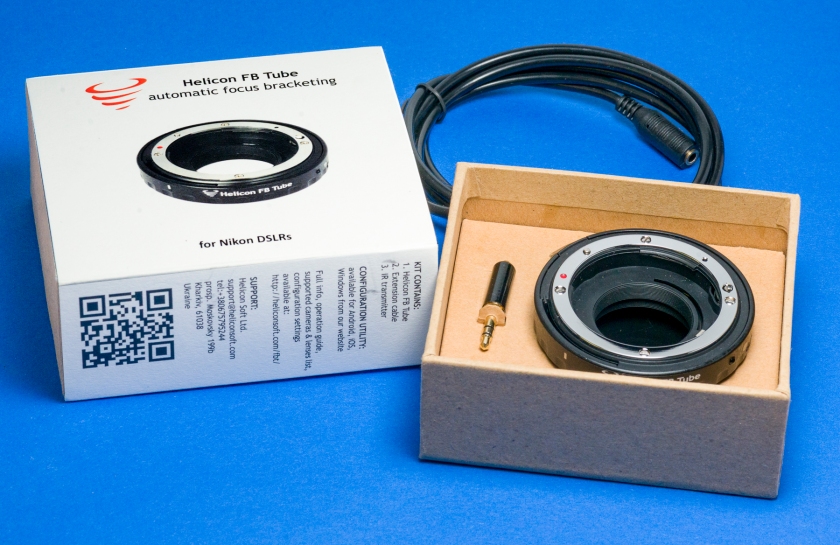
The unit has been tested and found compatible with a wide number of camera models and lens. Helicon FB Tube is available with mounts for Nikon and Canon cameras and AF lenses with built-in motor.
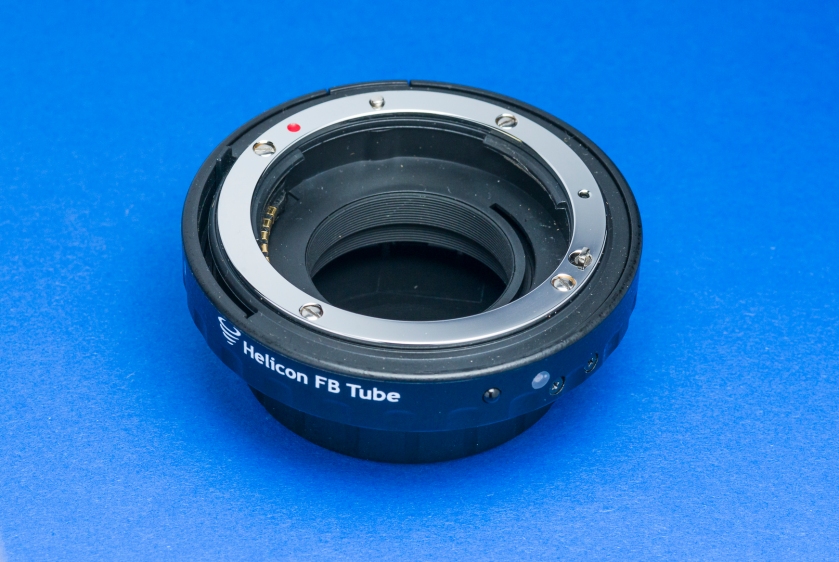
I tested the image focusing ability of the FB Tube making 15 focus step images of the acorns below using a step factor of 70. The camera was a Nikon D800 with the FB Tube and 105mm F2.8 Micro Nikkor. Selected aperture was F5.6. Electronic flash in TTL Mode within a softbox provided consistent light.
To set up the FB Tube a couple of simple settings are made on the smartphone device, including lens focal length, crop factor, aperture and step size. this was relatively straight-forward on my iPhone using the available ap:
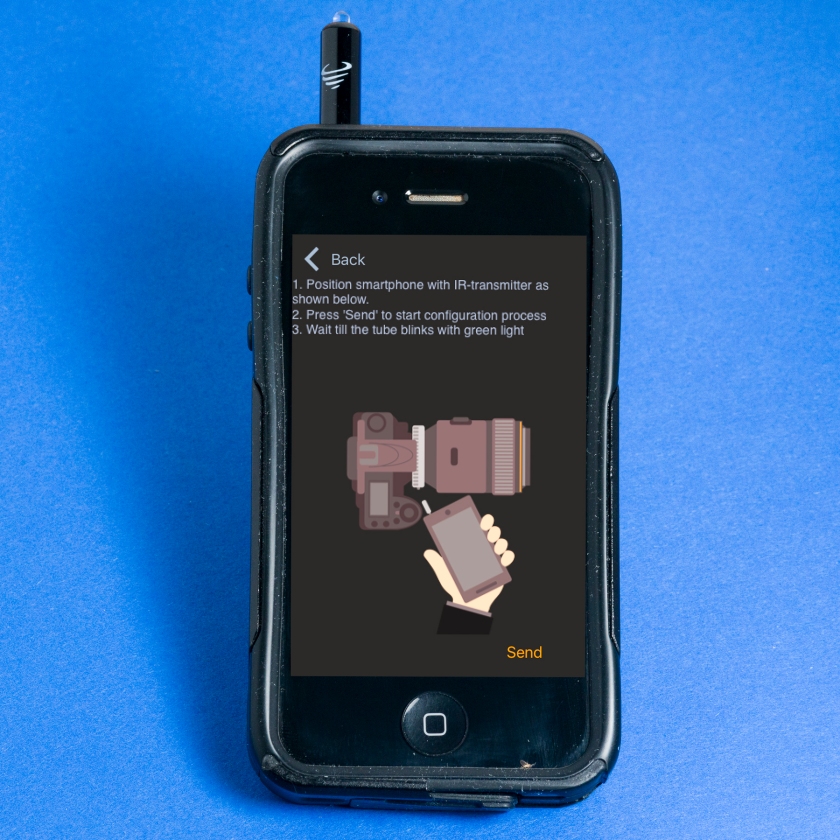


The phone then transmitted the data to the FB Tube via an IR emitter plugged into the phone audio jack and aimed at the tubes receiver. as shown below.
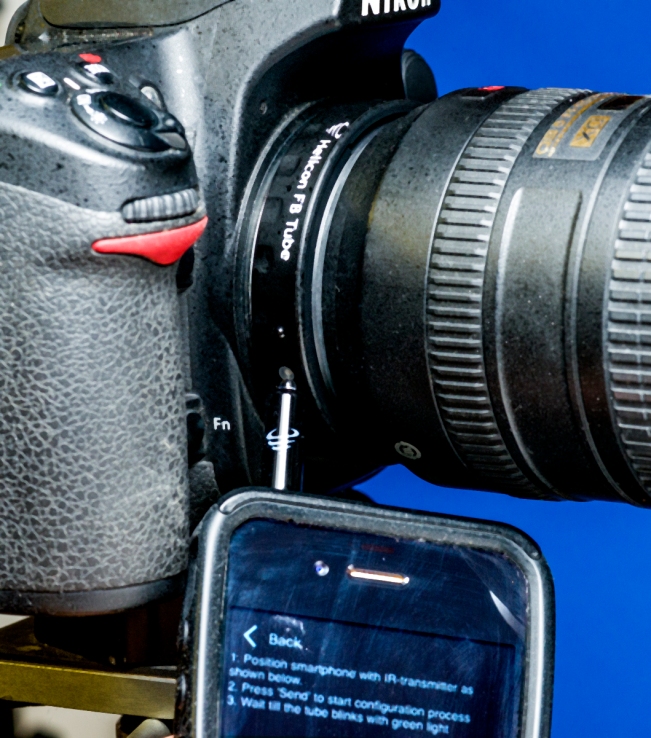
To get started, the first focal point was focused manually at 3.0 CM on the rule. The rest of the images in the series were focused automatically by the FB Tube. Three of those images are shown below -the first, middle, and last- of the 15 image sequence.

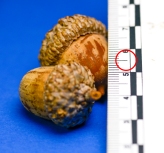

The fifteen images were selected in the computer and rendered in Helicon Focus
Method B (depth map) in a normal manner, rendering sharp focus from front to back. Final adjustments for tone, color and sharpening was completed in Photoshop CC.
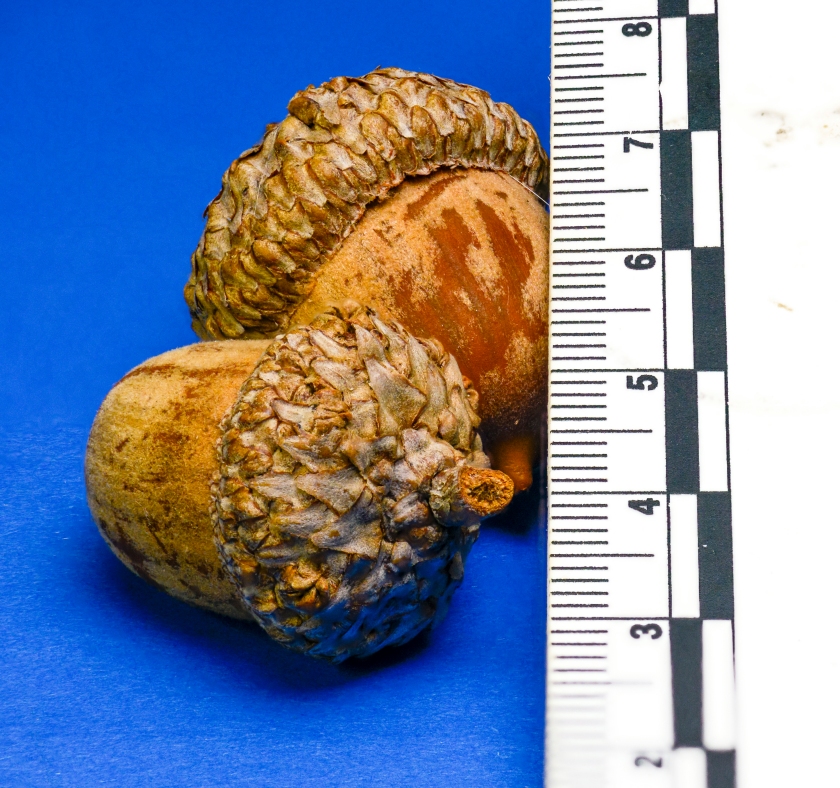
There are several procedures to make images for stacking. Moving the camera is simple and inexpensive. A manual rail is a bit of an expense, Fully automated, servo motor driven rails and associated accessories are often more than $600. In comparison, the Helicon FB Tube costs $200.


